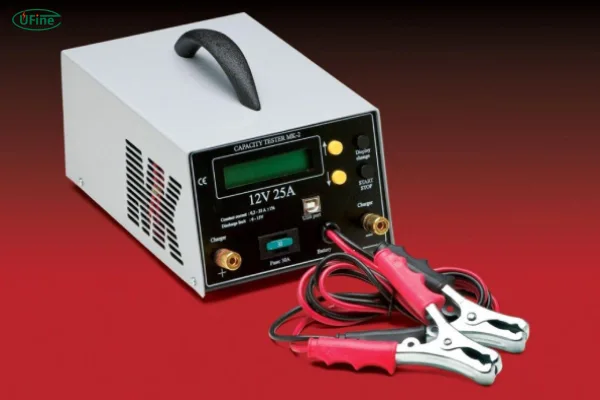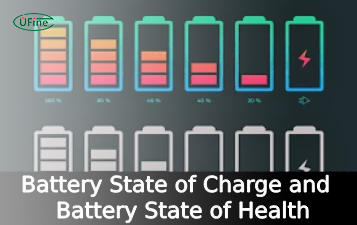
- Part 1. What is a battery capacity tester?
- Part 2. Why is testing battery capacity important?
- Part 3. How does a battery capacity tester work?
- Part 4. Types of battery capacity testers
- Part 5. Key specifications to consider when choosing a tester
- Part 6. How to use a battery capacity tester safely
- Part 7. Best practices and real-world applications
- Part 8. Conclusion
- Part 9.FAQs
As batteries become increasingly integrated into modern life—from smartphones and laptops to electric vehicles and solar power systems—understanding their performance and lifespan is more important than ever. One of the most effective tools for evaluating a battery’s health is the battery capacity tester.
In this article, we’ll explore what a battery capacity tester is, how it works, why it’s important, the different types available, and how to choose and use one correctly. Whether you’re a hobbyist, technician, or engineer, this guide will equip you with the essential knowledge.
Part 1. What is a battery capacity tester?
A battery capacity tester is an electronic device that measures the actual capacity of a battery—usually in milliampere-hours (mAh) or ampere-hours (Ah)—to determine how much energy it can store and deliver. This is distinct from simply measuring voltage or checking charge level. The capacity test provides a far more meaningful indication of a battery’s true performance.

Capacity is defined as the total amount of electric charge a battery can deliver at the rated voltage, over a specified period. While a battery may appear fully charged, it might no longer hold the original capacity due to aging or usage.
Typical features of a battery capacity tester:
- Load simulation (discharge under load)
- Voltage monitoring
- Current measurement
- Total time recording
- Data display (via screen or connected software)
Part 2. Why is testing battery capacity important?
Battery manufacturers often specify nominal capacity, but real-world conditions such as temperature, charge/discharge cycles, and aging degrade performance over time. Here’s why testing capacity is essential:
a. Preventing Equipment Failure
In critical systems (like drones, medical devices, or electric vehicles), a battery’s failure can have serious consequences. Testing helps identify weak batteries before they cause a problem.
b. Battery Matching
For battery packs with multiple cells (e.g., in series or parallel), matching the cells with similar capacity ensures better performance and safety.
c. Maximizing Battery Life
Routine testing helps users understand when to recharge or replace batteries, optimizing usage cycles and extending lifespan.
d. Verifying Manufacturer Claims
Some batteries, especially low-cost imports, may not deliver the advertised capacity. A tester helps verify these specifications.
Part 3. How does a battery capacity tester work?
Battery capacity testers typically function by discharging the battery under a controlled load and measuring how much energy it delivers until a cutoff voltage is reached. Here’s a step-by-step breakdown:
Step 1: Connect the Battery
The battery is connected to the tester’s terminals. Some testers are universal; others are specific to certain battery chemistries or voltages.
Step 2: Set Test Parameters
Users set parameters such as:
- Discharge current (e.g., 500mA or 2A)
- Cutoff voltage (e.g., 3.0V for Li-ion)
- Test duration or capacity limits
Step 3: Begin Discharge
The tester applies a constant load to simulate real-world usage. Advanced models can simulate different current profiles (constant, pulsed, or dynamic).
Step 4: Monitor Data
As the battery discharges, the tester records voltage, current, and time. Many modern testers log data digitally for analysis.
Step 5: Calculate Capacity
Once the cutoff voltage is reached, the tester calculates capacity using:
Capacity (Ah) = Discharge Current (A) × Discharge Time (hours)
The result is displayed on the device or sent to a computer.
Part 4. Types of battery capacity testers
There are several types of testers on the market, depending on complexity, battery type, and testing requirements.
a. Basic Digital Testers
- Inexpensive and easy to use
- Measure basic parameters like voltage, remaining capacity, and simple discharge
- Suitable for AA, AAA, 18650, and similar consumer batteries
Understanding the Difference Between AA and AAA Batteries
b. Programmable Load Testers
- Allow setting custom loads and discharge profiles
- Display real-time data and export results
- Suitable for RC batteries, lithium packs, power tools
c. Industrial Battery Test Systems
- High-precision, lab-grade equipment
- Multiple channels to test many batteries simultaneously
- Software integration and automation features
- Used in battery R&D, automotive, aerospace industries
d. Smartphone or USB Testers
- Plug-and-play devices to test power banks, chargers, or USB-powered devices
- Measure mAh passed during charging/discharging
- Limited but convenient
Part 5. Key specifications to consider when choosing a tester
Selecting the right battery capacity tester involves evaluating the following parameters:
a. Supported Battery Types
Li-ion, LiFePO4, NiMH, NiCd, SLA, etc. Choose a tester compatible with your specific chemistry.
NiMH Battery vs Li-Ion Battery vs NiCad Battery: How are they different?
b. Voltage and Current Range
Ensure the tester supports the full voltage and current levels your battery operates at (e.g., 3.7V, 12V, or 48V).
c. Accuracy and Resolution
Higher accuracy is essential for precise measurements, especially in R&D or high-performance applications.
d. Cooling and Safety Features
During discharge, some testers generate heat. Features like fan cooling, overheat protection, and short circuit prevention are critical.
e. Data Logging & Connectivity
USB, Bluetooth, or Wi-Fi connectivity is useful for exporting data, analyzing performance trends, or remote monitoring.
Part 6. How to use a battery capacity tester safely
Safety is essential when working with batteries and test equipment. Improper usage can cause overheating, fire, or even explosions.
Safety Tips:
- Always follow the voltage/current limits specified by the battery.
- Avoid over-discharging below safe cutoff levels (e.g., 2.5V for Li-ion).
- Use appropriate connectors to ensure firm and safe connections.
- Place batteries on non-flammable surfaces during tests.
- Supervise the testing process, especially for larger or high-current batteries.
- Use protective equipment (gloves, goggles) if testing high-capacity batteries.
Part 7. Best practices and real-world applications
Battery capacity testers are not just for engineers. Hobbyists, technicians, and even casual users can benefit from understanding how their batteries perform.
Best Practices:
- Test new batteries to verify they meet their rated capacity.
- Retest batteries every few months, especially in critical-use scenarios.
- For battery packs, test each cell individually before assembling.
- Record test results to monitor battery degradation over time.
Real-World Applications:
- Electric vehicles (EVs): Ensuring consistent performance across all battery modules
- Solar energy systems: Verifying storage capacity of off-grid batteries
- Consumer electronics: Detecting weak phone or laptop batteries
- RC drones and hobby kits: Monitoring lithium battery performance
- Medical equipment: Validating power backup reliability
Part 8. Conclusion
A battery capacity tester is an essential tool in today’s battery-driven world. It goes beyond checking voltage or charge and reveals the true health and capability of your batteries. Whether you’re managing a solar backup system, assembling custom battery packs, or just trying to figure out why your flashlight dies so quickly, knowing how to test and interpret battery capacity can save time, money, and headaches.
As batteries continue to power more aspects of our lives, understanding and measuring their actual performance becomes not just useful—but necessary.
Part 9.FAQs
1. Can a battery capacity tester revive a dead battery?
No, a battery capacity tester is a diagnostic tool, not a charger or repair device. While it can help identify whether a battery is underperforming or dead, it cannot revive or recharge batteries. For potentially reviving deeply discharged batteries, you would need specialized reconditioning or desulfation equipment, depending on the battery type.
2. Is there a difference between capacity testing and load testing?
Yes, there is a key difference.
- Capacity testing measures how much total energy a battery can deliver over time (Ah or mAh).
- Load testing evaluates a battery’s ability to maintain voltage under a short-term high current load, often used for checking starter batteries in vehicles.
- Each serves different diagnostic purposes.
3. Can I test a partially charged battery for capacity?
To get accurate capacity readings, the battery should be fully charged before testing. Starting a test with a partially charged battery will result in an inaccurate measurement that underestimates the true capacity, since the tester can only measure from the starting charge down to the cutoff voltage.
4. What is the difference between rated capacity and actual tested capacity?
- Rated capacity is the manufacturer’s specification under ideal test conditions (temperature, discharge rate, etc.).
- Actual tested capacity reflects real-world performance under your specific testing conditions.
- It’s normal for actual capacity to be 10–20% lower than rated capacity, especially as the battery ages.
5. Do battery capacity testers work on rechargeable and non-rechargeable batteries?
Most testers are designed for rechargeable batteries (like Li-ion, NiMH, or LiFePO4). Testing non-rechargeable batteries (like alkaline) can be dangerous if the tester attempts to charge or heavily discharge them. Always check the tester’s compatibility and instructions before using it on primary (non-rechargeable) cells.
Related Tags:
More Articles

Battery State of Charge and Battery State of Health
Battery SoC vs. SoH explained: Learn professional methods to measure charge levels, test health status, and optimize battery performance for longer lifespan.
Difference Between 18650, 26650, and 21700 Batteries
What’s the difference between 18650, 21700, and 26650 batteries? Compare size, capacity, and performance to find the best lithium battery for your device.
LFP Battery Vs. LTO Battery: A Detailed Comparison
Compare LFP (LiFePO4) and LTO (Lithium Titanate) batteries by energy density, lifespan, safety, cost, and uses in EVs, solar storage, and backup power.
Compare 18650 battery types: Li-ion, LiFePO4, and LiPo. Key specs (voltage/capacity) and best uses for vapes, flashlights, EV batteries.
How to Distinguish Between Grade A, Grade B, and Grade C LiFePO4 cells?
Explore the differences between Grade A, B, and C LiFePO4 cells and learn how to choose the right one for electric vehicles, solar storage, or backup power.


